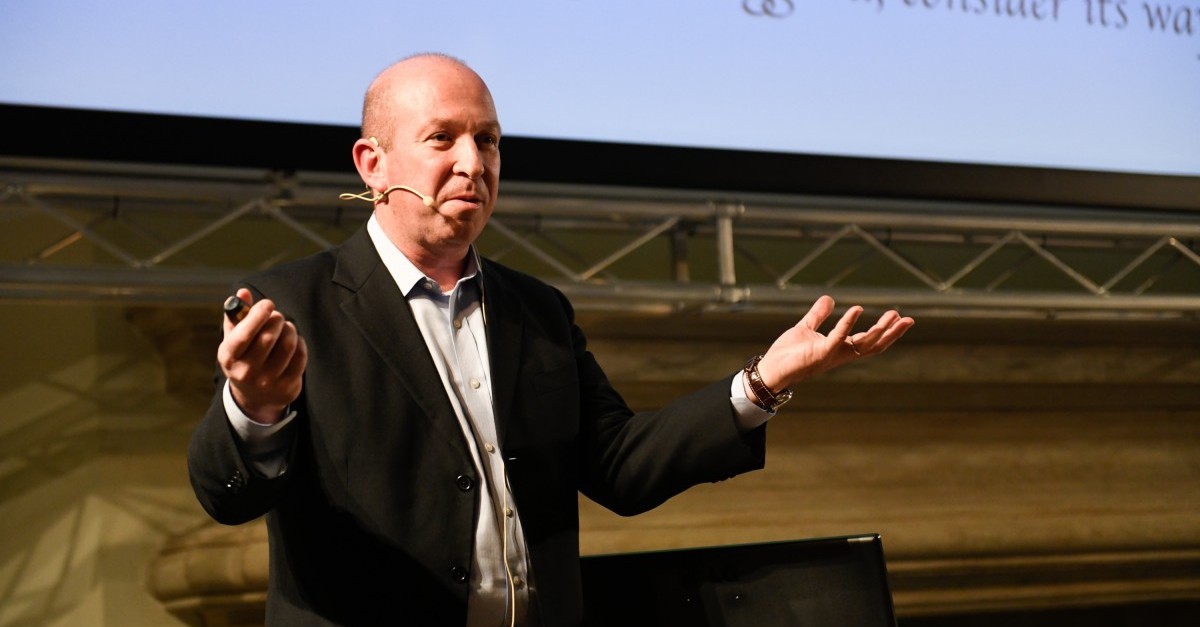
Alon Wolf and the Challenges of Robotics
27 November 2018Alon Wolf, Director and Founder of Biorobotics and Biomechanics Lab at Technion – Israel Institute of Technology, has been a guest of BBS for the second Innovation Talk of the autumn edition. During his speech titled New Frontiers in Robotic Technologies, he discussed the main challenges that the field of robotics is facing in order to become part of our everyday life.
“This revolution is proceeding so fast, we are already waiting for the next one,” said Alon Wolf, one of the world’s leading experts in the field of robotics and better known for its robotic snakes, designed to be used in urban search and rescue operations and surgical medicine, while addressing the Community of BBS last November 21, at Villa Guastavillani.
What do Kodak, Intel, Nokia and Blockbuster have in common? “All of these companies, at some point in their journey, have lost the train of progress without seeing in which direction the development of their sector was heading to,” said Wolf. “Intel, for example, has focused too much on integrating Wi-Fi technologies, completely ignoring the rise of mobile phones. The biggest mistake was to consider mobile phones as part of the telephone market, and not that of computers.” Similar is the story of Nokia, the icon of the first period of mobile telephony, which marked its end by missing the revolution of touch screen for only two years. Or that of Kodak, who despite having developed the first digital camera already in 1975, has abandoned the project and with it the possibility of being able to compete in the technological transformation that has invested the world of photography in the last decade.
It is quite obvious that it is essential to not miss the big trends, but it is not equally easy to understand how. “As I always tell my students, we must be able to recognize the sparks that ignite these trends. One of the most important sparks in human history has been the space race, which has given rise to the development of countless new technologies, from which we still benefit today,” explained Wolf. Even the Fourth Industrial Revolution, the one that today puts the objects in communication with each other and makes them “smart”, has been built with the results of the most recent sparks. Bluetooth, 4G, the cloud, and deep learning, to give just a few examples, have created the optimal conditions for a development that has no equal in human history.
What we are experiencing can be summarized, according to Wolf, with an exponential graph. Everything, from the speed with which new technologies are developed, to the speed with which they become part of our daily life, makes us understand that the future is much closer than we are willing to believe. “The key players in this transformational revolution are robots,” he adds. “In part, because they are the most complete cyber-physical systems we have at the moment and, in part, because of the aging of the global population. In 1990, there were 5.8 people to support every pensioner, while in 2020 there will be only 2.1. Soon, we will see more and more robots in the streets, doing our jobs. ”
Although robotics are the subject of a development that is proceeding at a very fast pace and, at the same time, of a growing attention from industry, medicine and public opinion, there are still many challenges that the sector must face in order to to enter fully into the daily life of humans. The development of new materials, for example, will allow for flexible robots capable of handling delicate products, while bio-inspired robots will be able to solve complex problems by copying nature. The research is also interested in the ‘swarms’ of robots that, by communicating with each other, are able to carry out coordinated and complex actions such as playing a piano. Furthermore, the resemblance to the humans leads robots to be particularly effective in interacting with the elderly and in the relationship with children in the spectrum of autism.
A robot is not just a machine, but is able to sense, process information and act accordingly. Precisely for this reason, one of the main problems that we will have to face in the near future, according to the opinion of Alon Wolf, is that of ethics. The human ethical standards, in fact, codified in an imperfect way by the law, give rise to uncertainties and paradoxes that the engineers have not yet had the courage to face. “The autonomous car is the first example of a robotic product that can deliberately damage its owner. Actually, the real problem lays in us and the criteria we will decide to use to program the robots,” explained Alon Wolf.
For all we know, man is the only living thing to make predictions and imagine its tomorrow. The very act of contemplating what makes us human is unique among other animal species. But if in the future machines will have the ability to reason, to be aware and have feelings, what will distinguish us as human beings? According to Stephen Hawking, artificial intelligence is the worst thing that could happen to humanity, perhaps precisely because it can amplify man’s innumerable weaknesses and imperfections and turn them into a source of danger.
“We are all overwhelmed by the speed of change,” concluded Professor Wolf. “Today, it is quite difficult to see where this transformation will take us, but I really believe that, as said by Victor Hugo, no power on earth can resist an idea whose time has come. And the time of robotics has arrived. “
